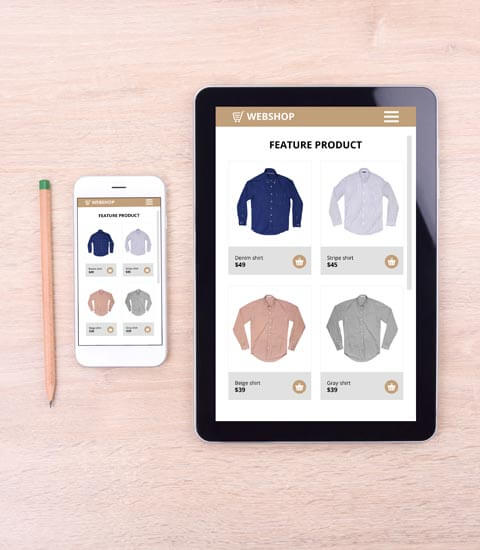
Marketing is a key part of any business, but it’s always changing . We’ve created a list of marketing terminology to serve as a reference for anyone that wants to make sure they know all the jargon, or to help better communicate with others within your business.
A/B Testing
A/B testing, also known as split testing, is a randomized marketing experiment where you test two or more variables of a campaign to determine which performs better. The variables you can test can range from ad copy, design, website layout, call to action, and more. This method can help marketers understand which of the variables had the most impact on their audience.
Automation
Automation is using technology to perform specific marketing tasks. If you have set things that you do repeatedly, like onboarding for new members or clients, you may benefit from setting it up to be automated.
B2B
B2B is short for business-to-business. B2B marketing is the marketing of products or services to a business or organization such as governments, institutions, nonprofits, etc. Since this type of marketing revolves around business decisions, it tends to be informational and direct.
B2C
B2C stands for business-to-consumer. B2C marketing is aimed at selling products and services to consumers. Consumer-based purchases tend to be more impulsive and emotionally based so B2C marketers must work to influence customer behavior.
Blog
A blog is a collection of journal-like articles written about a particular topic and published on a website. Blogging is a great tactic to get your business more online visibility and can establish you as an expert in your industry or field. Every time you create and publish a blog post, a new page will be added to your site, which gives you another opportunity to show up in search engine results.
Brand Awareness
Brand awareness refers to how familiar your target audience is with your brand and how well they recognize it. Working to achieve brand awareness helps establish a loyal audience that chooses your brand among competitors, and recommends their friends and family do the same.
Brand Positioning
How you differentiate, or position, yourself against competitors is brand positioning. It’s essentially the strategy used to set your business apart from the rest, and showing consumers why they should do business with you over other companies.
Buyer Persona
Buyer personas are semi-fictional representations of your ideal members based on demographic, psychographic, behavioral information, and market research. Developing personas helps businesses understand and relate to their target audience which in turn can help when deciding how to market to them.
Copywriting
Copywriting refers to the act or occupation of writing copy used in advertising to drive sales or bring in leads. It is used for landing pages, brochures, blogs, newsletters, flyers, and more.
CTA
CTA is an acronym that stands for call to action. A CTA is a prompt within advertising that instructs the viewer to take some type of action. Examples of a CTA can be “Shop Now” or “Learn More.”
Customer Acquisition
This refers to all of the steps, processes and resources involved in attracting a first-time customer to your business.
Customer Retention
This is the act of renewing your existing customers so they continue to work with your company.
Demographic
Demographics are the different segments you can break an audience into like age, gender, income, geographic location, education, and more. Depending on what demographic segment you are targeting, the strategies used will vary. Demographic marketing is tailoring your advertising to appeal best to whichever group you need to target.
Digital Marketing
Digital Marketing is the communication or advertising via an online or mobile platform. We use this term a lot when talking about digital ads, email marketing and social media.
Evergreen Content
Evergreen content is search-optimized content that is continually relevant and stays “fresh” for readers over a long period of time. Common types of evergreen formats include tips, how-to tutorials, product reviews, blogs, case studies and testimonials. Avoid including time-related specifics such as rates and special offers in evergreen content.
Focus Groups
A focus group is a research technique that brings together a group of people in a moderated environment to answer questions around a topic of interest. The answers given and observations made during the discussion can provide helpful feedback on consumer behavior, wants, needs, decisions, and more.
Interim Marketing
Interim marketing is when a company reaches out to an agency to help with vacancies within their marketing department. An interim marketer steps up for a temporary frame of time to help a company continue to be productive and reach their marketing goals.
KPI
KPI is an acronym for key performance indicator. Marketers look to KPIs to measure the performance of their campaigns against industry metrics. Some examples of a KPI include website traffic, social media reach, leads, blog visits, and landing page conversions.
Lead Nurturing
Lead nurturing is the process of educating and building trust with your prospects in order to guide them through the buyer’s journey. The goal is lead nurturing is to provide your prospects with a unique experience that keeps them coming back for more.
Lifetime Value
Lifetime value is an estimate of the average revenue that a customer will generate throughout their lifespan as a customer. It’s an important metric as it costs less to keep existing customers than it does to acquire new ones, so increasing the value to your existing customers is a great way to drive growth.
ROI
ROI is an acronym that stands for return on investment. It is a measure on how profitable an investment is. The formula to measure the ROI is: (Net Income / Cost) x 100. The answer is a percentage and if it is negative, it indicates the company is losing money due to the investment. ROIs are often calculated after each campaign to determine the profitability, as well as the effectiveness.
Target Audience
Your target audience is the people you want to reach with your marketing efforts. These are the consumers who will be most interested in your products or services, and most likely to convert from leads to customers.






